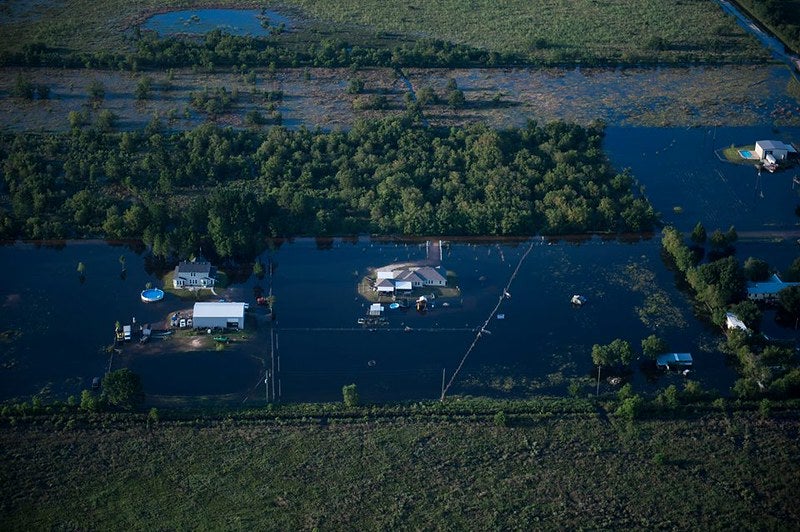As climate change drives more intense storms, hurricane-related costs in the United States have increased 1,100% since 1980, and the population of counties prone to hurricane damage has increased at least 22% faster than the overall U.S. population has grown.
State governments must prioritize rebuilding better and investing in climate resilience now to avoid the skyrocketing costs of future disasters. Every $1 invested to mitigate a disaster saves $6 in recovery.
These four states found innovative ways to finance climate resilience, and they provide models for other states to follow, even in the face of budget uncertainty.
North Carolina maximizes public and private funding
At the end of June, the North Carolina legislature passed the NC SECURE Act, which streamlines funding and implementation of mitigation and restoration projects that store floodwater and decrease flood risk.
The legislation creates a voluntary program that can be funded by state and federal appropriations, including funds from federal disaster relief. It prioritizes natural infrastructure solutions to store floodwater and creates a first-of-its kind flood reduction marketplace to engage private businesses in meeting watershed flood storage targets.
Texas turns to its rainy-day fund
In the devastating aftermath of Hurricane Harvey, Texas lawmakers voted to fund flood mitigation projects using a $1.7 billion transfer from the state’s aptly named rainy day fund.
The resulting Flood Infrastructure Fund, which Texas voters approved after it passed the legislature, provides $793 million in low-interest loans and grants for flood drainage, mitigation and control projects.
The transfer also seeded the Texas Infrastructure Resiliency Fund, which consists of four separate accounts to fund flood data collection, mitigation project grants, Hurricane Harvey recovery and flood plan development. It will also provide the state with matching dollars to secure federal flood project assistance from the Army Corps of Engineers.

An aerial view of the flooding caused by Hurricane Harvey in Houston, Texas, Aug. 31, 2017. Hurricane Harvey formed in the Gulf of Mexico and made landfall in southeastern Texas, bringing record flooding and destruction to the region.
Virginia and New Jersey harness greenhouse gas market revenue
Virginia and New Jersey both will fund climate resilience projects with revenue from the Regional Greenhouse Gas Initiative — a carbon emissions cap-and-invest program for the electricity sector that includes 10 Northeastern states.
Virginia joined RGGI in 2020 and expects to generate $100 million annually from auction proceeds. The state plans to invest 45% of this annual revenue in the Virginia Community Flood Preparedness Fund, created earlier this year by the state legislature. The fund will provide loans and grants for projects that mitigate sea level rise and flood risk, and for impact studies that enhance the resilience of flood-prone communities. Critically, at least 25% of funds will support minority and low-income communities.
New Jersey rejoined RGGI in 2019 and expects to generate $80 million annually. It plans to spend that same amount every year on environmental projects [PDF] from 2020 to 2022. The Department of Environmental Protection will also spend around $24 million over three years on natural infrastructure projects, such as forest restoration and blue carbon conservation efforts, that can sequester carbon and increase resilience to climate change.
Coastal states are finding innovative ways to finance resilience and protect communities from future disasters. Share on XState and federal partnerships remain important
States are finding resourceful ways to make urgently needed investments in resilience, but they still need assistance and cooperation from the federal government. Congress can help by passing any number of bipartisan resilience bills that support states, tribes and local communities with tools and resources.
Investments in resilience provide a nonpartisan, collaborative opportunity to better protect communities from future disasters while also spurring economic growth and jobs.









